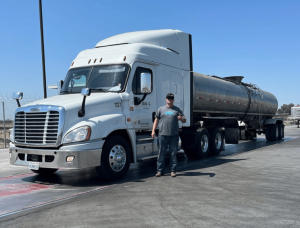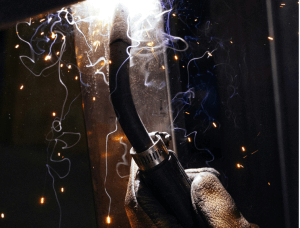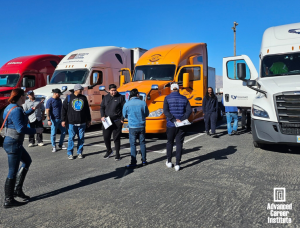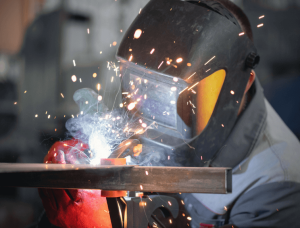Welding is a critical skill that supports a wide range of industries, from construction and manufacturing to aerospace and energy. Without skilled welders, essential structures, machinery, and transportation systems wouldn’t be possible. As industries continue to grow and evolve, the demand for trained welders remains strong, offering countless career opportunities for those with the right skills. In this blog, we’ll explore the industries that rely on welders, highlighting the vital role they play and the exciting career paths available in this essential trade.
Why Welding Is an Essential Skill Across Industries
Welding jobs are a fundamental trade that serves as the backbone of countless industries, making it one of the most versatile and in-demand skills in the workforce. From towering skyscrapers and massive bridges to intricate aerospace components and high-performance vehicles, welding is responsible for creating and maintaining the structures and equipment that keep the world moving. Beyond construction and manufacturing, welders play a crucial role in emerging industries like renewable energy and advanced technology, ensuring innovation and progress continue. With advancements in automation and specialized welding techniques, the need for skilled welders is only growing, offering job security and career advancement opportunities across a variety of fields.
Industries That Rely on Welders
1. Construction and Infrastructure
The construction industry depends heavily on welders to create and maintain buildings, bridges, and other essential infrastructure. Welders work on steel frameworks, reinforce concrete structures, and ensure the stability of high-rise buildings. Public infrastructure, such as highways, tunnels, and pipelines, also requires skilled welders to maintain and repair metal components. As cities expand and new projects develop, welders remain at the forefront of this industry.
2. Manufacturing and Fabrication
Manufacturing is one of the largest industries for welders, offering employment in factories that produce everything from household appliances to industrial machinery. Welders work with metal components to assemble products, reinforce materials, and ensure durability. Many modern manufacturing facilities use automated welding processes, but skilled welders are still needed to oversee production, inspect welds, and handle intricate tasks that machines cannot perform.
3. Automotive and Transportation
Welders play a significant role in the automotive industry, helping to build and repair cars, trucks, and even public transportation systems like buses and trains. Every vehicle contains welded components that contribute to its safety and efficiency. Welders also work on custom automotive projects, such as race cars and specialty vehicles, creating high-performance frames and exhaust systems. With the rise of electric and autonomous vehicles, the demand for specialized welding skills in this field is increasing.
4. Aerospace and Aviation
Precision welding is crucial in the aerospace industry, where aircraft and spacecraft require strong, lightweight, and durable materials. Aerospace welders work on airplane fuselages, jet engines, and satellite components, using advanced techniques like TIG welding and laser welding to ensure structural integrity. The high standards and safety regulations in aerospace welding make this a challenging but rewarding career path.
5. Shipbuilding and Maritime Industry
The maritime industry depends on welders to build and repair ships, submarines, and offshore drilling platforms. These structures must withstand extreme weather conditions and the constant wear of saltwater exposure. Some welders in this field specialize in underwater welding, a highly skilled and high-paying profession that involves working in submerged environments to repair ship hulls, pipelines, and offshore structures.
6. Energy and Power Generation
Welding is essential in the energy sector, helping to construct and maintain pipelines, power plants, and renewable energy systems. In the oil and gas industry, pipeline welders work in challenging environments to ensure the safe transportation of fuel. Meanwhile, the renewable energy sector relies on welders to build wind turbine towers, solar panel structures, and hydroelectric power facilities. As the world shifts toward sustainable energy, welders will continue to play a crucial role in shaping the future of power generation.
7. Agriculture and Heavy Equipment
Farms and agricultural businesses rely on welders to repair and maintain heavy machinery, including tractors, plows, and irrigation systems. Welding is used to build sturdy equipment that can endure rough conditions and heavy use. Skilled welders in this industry ensure that farmers and construction workers have the durable tools they need to operate efficiently.
8. Military and Defense
The military relies on welders to build and maintain vehicles, ships, aircraft, and infrastructure used in national defense. Military welders may work on armored vehicles, aircraft carriers, or even weapons systems, ensuring they meet strict durability and performance standards. Some welders in this industry work directly for government agencies, while others are employed by defense contractors.
How to Get Started in Welding for These Industries
For those interested in a welding career, proper training and certifications are essential. Many industries require specialized welding skills, so gaining hands-on experience and obtaining certifications from organizations can open doors to high-paying opportunities. Enrolling in a welding training program, such as the one offered at Advanced Career Institute, can help aspiring welders build a strong foundation and gain the technical knowledge needed to succeed in various industries.
Why Welding Is a Strong Career Choice
Welding jobs offer security, career advancement, and excellent earning potential. As industries continue to expand and evolve, the demand for skilled welders remains steady. Whether working on massive infrastructure projects, high-tech aerospace components, or cutting-edge renewable energy systems, welders have the opportunity to build a fulfilling career in a field that keeps the world running.
From construction and manufacturing to aerospace and energy, skilled welders are needed in nearly every industry. Welding jobs provide stability, diverse career paths, and opportunities for professional growth. If you're considering a hands-on career with strong earning potential, welding could be the perfect choice for you.
Start your welding journey today with Advanced Career Institute and gain the skills needed to work in these essential industries!








 “I wanted a more reliable and steady income. Acquiring a CDL makes you employable in the 49 continental states,” he states, “I wanted to always have steady employment to help raise my kids.”
After multiple people recommended Advanced Career Institute, Logan chose to enroll at our Visalia campus.. When asked about his experience at both the Visalia and Fresno campuses, he had nothing but kind things to say about the staff members. From start to finish, there were staff members and instructors that helped him to succeed.
“Melissa was so perfect at the pre-trip and wouldn’t allow anyone to cut corners, she didn’t want to make us unsafe drivers.”
“I wanted a more reliable and steady income. Acquiring a CDL makes you employable in the 49 continental states,” he states, “I wanted to always have steady employment to help raise my kids.”
After multiple people recommended Advanced Career Institute, Logan chose to enroll at our Visalia campus.. When asked about his experience at both the Visalia and Fresno campuses, he had nothing but kind things to say about the staff members. From start to finish, there were staff members and instructors that helped him to succeed.
“Melissa was so perfect at the pre-trip and wouldn’t allow anyone to cut corners, she didn’t want to make us unsafe drivers.”